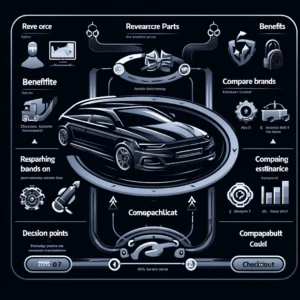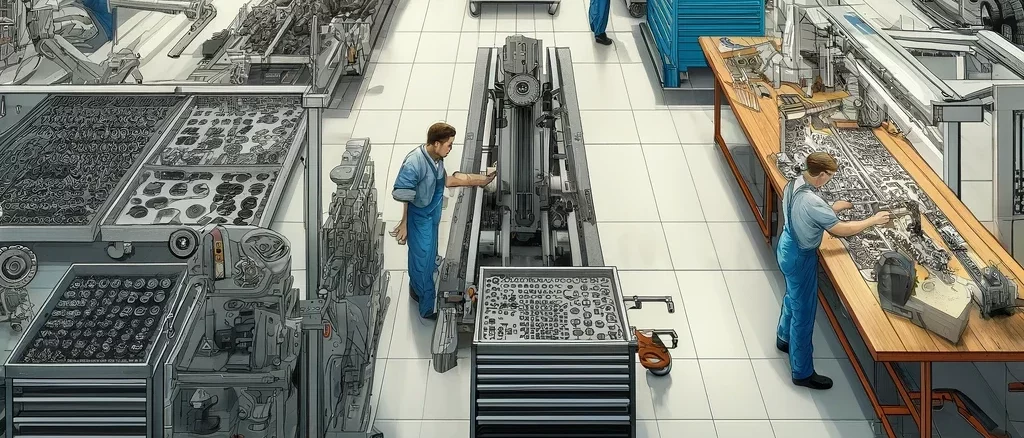I’m going to peel back the curtain on a topic that might seem complex at first: Aftermarket Car Parts. Now, these aren’t just the generic replacements you’ll find at your local garage; aftermarket parts can be anything from performance boosters to style enhancers that can really make your vehicle stand out.
What sets aftermarket parts apart from Original Equipment Manufacturer (OEM) components? While OEM parts are made by the car’s maker and designed to fit perfectly, aftermarket parts are produced by other companies. That’s going to include high-performance parts designed to improve speed and handling, as well as cosmetic pieces that add a personal touch to the look of your car.
You’re going to find out about the benefits of going aftermarket, such as wider selection and often better prices compared to OEM parts. They’re a game-changer for car enthusiasts looking to customize or upgrade their rides without breaking the bank. And when it comes to types, the sky’s the limit. From air intake systems to LED lighting kits, you can modify nearly every aspect of your vehicle.
This isn’t just about variety, though; it’s also about quality. Many aftermarket parts come with certifications and guarantees, ensuring they meet strict performance and safety standards. It’s important to look for these markers of quality, such as ISO certification, to ensure you’re getting a product that’s both safe and reliable.
Navigating Aftermarket Parts: A Guide for Car Enthusiasts

If you want to customize your vehicle or replace worn parts, understanding how to select the right aftermarket parts is crucial. There’s a vast array of options available, and not all are created equal.
Your first step should be ensuring compatibility. Every car model has its unique requirements, and picking parts that don’t fit can be like trying to jam a square peg into a round hole. Always check the specifications against your vehicle’s model, make, and year.
In my opinion, legal compliance is another important aspect. Certain modifications can make your vehicle non-compliant with regulations, leading to fines or worse. It’s essential to verify that the parts you’re interested in meet the legal standards in your area.
Don’t worry too much about wading through the myriads of manufacturers and suppliers alone. A little research goes a long way. Look for reviews, ratings, and testimonials about both the part and the provider. An excellent reputation in the automotive community is often a good indicator of quality and reliability.
Next, let’s talk about warranties and return policies. These are your safety nets. Ensure you’re clear on the terms provided by the seller. Can you return the part if it’s not a fit? What sort of warranty is offered, and what does it cover?
And when it comes to installation, choose something that resonates with you. Are you a skilled mechanic with the right tools at hand, or would you be better off entrusting your vehicle to a professional? Depending on the complexity of the part, professional installation might not just be recommended, it could be necessary to maintain safety standards.
By following these pointers, you’ll be setting yourself up for success in enhancing your vehicle with the right aftermarket parts. And once these components are in place, it’s only natural to wonder, how do they affect your car’s value and performance? That’s going to include understanding both the positive impacts and potential risks involved.
The Impact of Aftermarket Parts on Car Value and Performance
Choose something that resonates with you when it comes to modifying your car – whether for improved performance, enhanced aesthetics, or just a touch of personal flair with aftermarket parts. Let’s not lose sight of the big picture: the value and performance of your car. In my opinion, making an informed decision about aftermarket modifications can safeguard the investment you’ve made in your vehicle.
When you upgrade your car with performance parts, you’re not just boosting horsepower or handling; you’re potentially changing its market value. It’s a double-edged sword. Some modifications can increase the value of niche or enthusiast models, but they might decrease the overall resale value if the changes are not universally desirable.
As far as insurance goes, I’m here to tell you it’s crucial. Your insurer should be aware of any significant modifications to ensure coverage continues without a hitch. Insurance companies might adjust premiums based on the changes made, so keep that dialogue open.
You’re also going to find out about authenticity and how it plays into this. Car enthusiasts often chase authenticity, which can mean sticking close to stock parts or selecting aftermarket parts that enhance but don’t overwrite the original character of the car.
Now, what about the long haul? Aftermarket parts can have mixed effects on your vehicle’s reliability. High-quality parts may improve the longevity of your car, but poor-quality or improperly installed components can lead to more headaches down the road. It’s about striking that balance between performance and practicality.
In closing, aftermarket car parts present an arena of great possibilities for personalizing and enhancing your automobile. Always consider the potential impact on value and performance, and don’t shy away from consulting professionals. Remember, your first attempt doesn’t need to be your last – you can always adjust your approach down the road.

